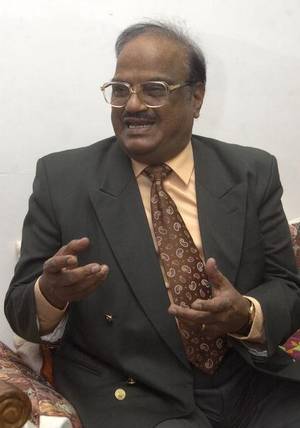He cracked the Rajiv assassination case; helped identify bomber Dhanu
Renowned forensic expert, Pakkiriswamy Chandra Sekharan, who helped investigators crack the Rajiv Gandhi assassination case and played a seminal role in getting back the stolen 1,500-year-old Pathur Nataraja idol from the U.K., died here on Tuesday.
He was 83 and is survived by his wife and daughter.
A former director of the Tamil Nadu Forensic Sciences department, Prof. Chandra Sekharan was awarded the Padma Bhushan.
An acknowledged expert as well as a pioneer in some forensic techniques, Prof. Chandra Sekharan deconstructed the suicide bomb attack on Rajiv Gandhi in May 1991.
He made the sensational disclosure a day after the assassination that the killer was a woman who acted as a human bomb.
He pieced together tattered pieces of denim fabric to conclude that the assassin was wearing a vest or jacket in which a bomb could have been packed.
He proceeded to reconstruct the belt bomb as well as its two-switch circuitry, one to switch on the mechanism and the other to detonate the RDX bomb.
K. Ragothaman, the chief investigating officer, recalled Prof. Chandra Sekharan’s great help. The forensic expert obtained the roll of film from a camera used by Hari Babu, a photographer who was killed in the explosion, to get pictures of the fateful public meeting.
“But for those 10 crucial photographs, we would not have been able to detect the case. While video footage taken minutes before the explosion was suppressed by none other than the then Intelligence Bureau Director, Prof. Chandra Sekharan preserved the valuable evidence and gave it to us,” Mr. Ragothaman said.
D.R. Kaarthikeyan, former CBI Director and Chief of the Special Investigation Team that investigated the Rajiv Gandhi assassination, said Prof. Chandra Sekharan had enormous knowledge in forensic science and his service was of immense help in the case.
Tracking Nataraja
He used both forensic science and traditional knowledge in establishing India’s claim over the Nataraja idol at the Royal Court of Justice in the U.K.
After the idols were stolen from the Viswanatha Swamy temple, they were hidden for some time in a haystack. Termites devoured the haystack and in the process left their ‘galleries’ on the idols. The idols were later unearthed, but the Nataraja idol alone was sold and it found its way to London. “Though the idol was cleaned a couple of times, the lower part was left untouched and I spotted the termite nest. I used that to win the case,” he once told The Hindu.
He was a much sought-after expert witness, appearing in courts across India, as well as in the United Kingdom, Singapore and Sri Lanka for both prosecution and defence.
source: http://www.thehindu.com / The Hindu / Home> News> National / by Special Correspondent / Chennai – July 11th, 2017
